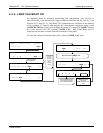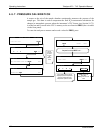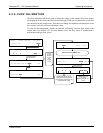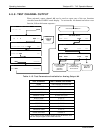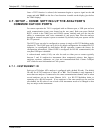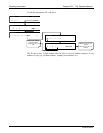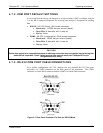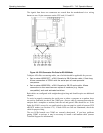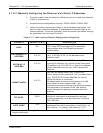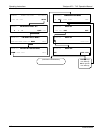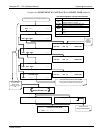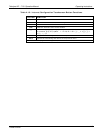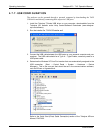
Teledyne API – T101 Operation Manual Operating Instructions
107
4.7.4. RS-485 CONFIGURATION
As delivered from the factory, COM2 is configured for RS-232 communications. This
port can be re-configured for operation as a non-isolated, half-duplex RS-485 port capable
of supporting up to 32 instruments with a maximum distance between the host and the
furthest instrument being 4000 feet. However, with the RS-485 configuration the USB
comm port is disabled. If you require full-duplex or isolated operation, please contact
Teledyne API’s Technical Support.
4.7.5. DTE AND DCE COMMUNICATION
RS-232 was developed for allowing communications between data terminal equipment
(DTE) and data communication equipment (DCE). Basic terminals always fall into the
DTE category whereas modems are always considered DCE devices. The difference
between the two is the pin assignment of the Data Receive and Data Transmit functions.
DTE devices receive data on pin 2 and transmit data on pin 3.
DCE devices receive data on pin 3 and transmit data on pin 2.
To allow the analyzer to be used with terminals (DTE), modems (DCE) and computers
(which can be either), a switch mounted below the serial ports on the rear panel allows the
user to set the configuration of COM1 for one of these two modes. This switch
exchanges the receive and transmit lines on COM1 emulating a cross-over or null-modem
cable. The switch has no effect on COM2.
4.7.6. ETHERNET CONFIGURATION
For network or Internet communication, the analyzer can be connected to any standard
10BaseT or 100BaseT Ethernet network via low-cost network hubs, switches or routers.
The interface operates as a standard TCP/IP device on port 3000. This allows a remote
computer to connect through the internet to the analyzer using APICOM, terminal
emulators or other programs.
The Ethernet cable connector on the rear panel has two LEDs indicating the Ethernet’s
current operating status.
Table 4-16. Ethernet Status Indicators
LED FUNCTION
amber (link) On when connection to the LAN is valid.
green (activity Flickers during any activity on the LAN.
4.7.6.1. Configuring the Ethernet Interface Using DHCP
The analyzer is shipped with DHCP enabled by default. This allows the instrument to be
connected to a network or router with a DHCP server. Consult with your network
administrator to affirm that your network server is running DHCP. If so, the instrument
07266B DCN6485



